NK3 homeobox 1 (NKX3.1) up-regulates forkhead box O1 expression in hepatocellular carcinoma and thereby suppresses tumor proliferation and invasion
- PMID: 28972178
- PMCID: PMC5702659
- DOI: 10.1074/jbc.M117.793760
NK3 homeobox 1 (NKX3.1) up-regulates forkhead box O1 expression in hepatocellular carcinoma and thereby suppresses tumor proliferation and invasion
Abstract
Hepatocellular carcinoma (HCC) is the leading cause of cancer-related mortality in China, and the molecular mechanism of uncontrolled HCC progression remains to be explored. NK3 homeobox 1 (NKX3.1), an androgen-regulated prostate-specific transcription factor, suppresses tumors in prostate cancer, but its role in HCC is unknown, especially in hepatocellular carcinoma. In the present study, the differential expression analyses in HCC tissues and matched adjacent noncancerous liver tissues revealed that NKX3.1 is frequently down-regulated in human primary HCC tissues compared with matched adjacent noncancerous liver tissues. We also noted that NKX3.1 significantly inhibits proliferation and mobility of HCC cells both in vitro and in vivo Furthermore, NKX3.1 overexpression resulted in cell cycle arrest at the G1/S phase via direct binding to the promoter of forkhead box O1 (FOXO1) and up-regulation of expression. Of note, FOXO1 silencing in NKX3.1-overexpressing cells reversed the inhibitory effects of NKX3.1 on HCC cell proliferation and invasion. Consistently, both FOXO1 and NKX3.1 were down-regulated in human HCC tissues, and their expression was significantly and positively correlated with each other. These results suggest that NKX3.1 functions as a tumor suppressor in HCC cells through directly up-regulating FOXO1 expression.
Keywords: FOXO; NK3 Homeobox 1; cell proliferation; hepatocellular carcinoma; metastasis; tumor suppressor gene.
© 2017 by The American Society for Biochemistry and Molecular Biology, Inc.
Conflict of interest statement
The authors declare that they have no conflicts of interest with the contents of this article
Figures
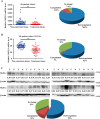
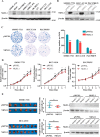
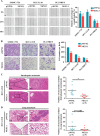


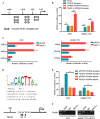
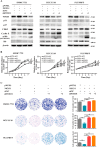
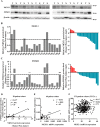
Similar articles
-
Zinc finger protein ZBTB20 is an independent prognostic marker and promotes tumor growth of human hepatocellular carcinoma by repressing FoxO1.Oncotarget. 2016 Mar 22;7(12):14336-49. doi: 10.18632/oncotarget.7425. Oncotarget. 2016. PMID: 26893361 Free PMC article.
-
MicroRNA-424-5p acts as a potential biomarker and inhibits proliferation and invasion in hepatocellular carcinoma by targeting TRIM29.Life Sci. 2019 May 1;224:1-11. doi: 10.1016/j.lfs.2019.03.028. Epub 2019 Mar 12. Life Sci. 2019. PMID: 30876939
-
Long noncoding RNA matrilineal expression gene 3 inhibits hepatocellular carcinoma progression by targeting microRNA-5195-3p and regulating the expression of forkhead box O1.Bioengineered. 2021 Dec;12(2):12880-12890. doi: 10.1080/21655979.2021.2005986. Bioengineered. 2021. PMID: 34895065 Free PMC article.
-
FOXO1: Another avenue for treating digestive malignancy?Semin Cancer Biol. 2018 Jun;50:124-131. doi: 10.1016/j.semcancer.2017.09.009. Epub 2017 Sep 28. Semin Cancer Biol. 2018. PMID: 28965871 Free PMC article. Review.
-
The Expression and Function of Circadian Rhythm Genes in Hepatocellular Carcinoma.Oxid Med Cell Longev. 2021 Oct 16;2021:4044606. doi: 10.1155/2021/4044606. eCollection 2021. Oxid Med Cell Longev. 2021. PMID: 34697563 Free PMC article. Review.
Cited by
-
Functional study and epigenetic targets analyses of SIRT1 in intramuscular preadipocytes via ChIP-seq and mRNA-seq.Epigenetics. 2023 Dec;18(1):2135194. doi: 10.1080/15592294.2022.2135194. Epub 2022 Oct 20. Epigenetics. 2023. PMID: 36264146 Free PMC article.
-
Machine Learning Approach and Bioinformatics Analysis Discovered Key Genomic Signatures for Hepatitis B Virus-Associated Hepatocyte Remodeling and Hepatocellular Carcinoma.Cancer Inform. 2025 Apr 16;24:11769351251333847. doi: 10.1177/11769351251333847. eCollection 2025. Cancer Inform. 2025. PMID: 40291818 Free PMC article. Review.
-
The Homeodomain Transcription Factor NKX3.1 Modulates Bladder Outlet Obstruction Induced Fibrosis in Mice.Front Pediatr. 2019 Nov 12;7:446. doi: 10.3389/fped.2019.00446. eCollection 2019. Front Pediatr. 2019. PMID: 31781523 Free PMC article.
-
Hepatocellular carcinoma: Mechanisms of progression and immunotherapy.World J Gastroenterol. 2019 Jul 7;25(25):3151-3167. doi: 10.3748/wjg.v25.i25.3151. World J Gastroenterol. 2019. PMID: 31333308 Free PMC article. Review.
-
KLF5-induced miR-487a augments the progression of osteosarcoma cells by targeting NKX3-1 in vitro.Oncol Lett. 2022 Jun 14;24(2):258. doi: 10.3892/ol.2022.13378. eCollection 2022 Aug. Oncol Lett. 2022. PMID: 35765275 Free PMC article.
References
-
- Siegel R. L., Miller K. D., and Jemal A. (2017) Cancer statistics, 2017. CA Cancer J. Clin. 67, 7–30 - PubMed
-
- Critelli R. M., De Maria N., and Villa E. (2015) Biology of hepatocellular carcinoma. Dig. Dis. 33, 635–641 - PubMed
-
- Ferlay J., Soerjomataram I., Dikshit R., Eser S., Mathers C., Rebelo M., Parkin D. M., Forman D., and Bray F. (2015) Cancer incidence and mortality worldwide: sources, methods and major patterns in GLOBOCAN 2012. Int. J. Cancer 136, E359–E386 - PubMed
Publication types
MeSH terms
Substances
LinkOut - more resources
Full Text Sources
Other Literature Sources
Medical
Research Materials
Miscellaneous

